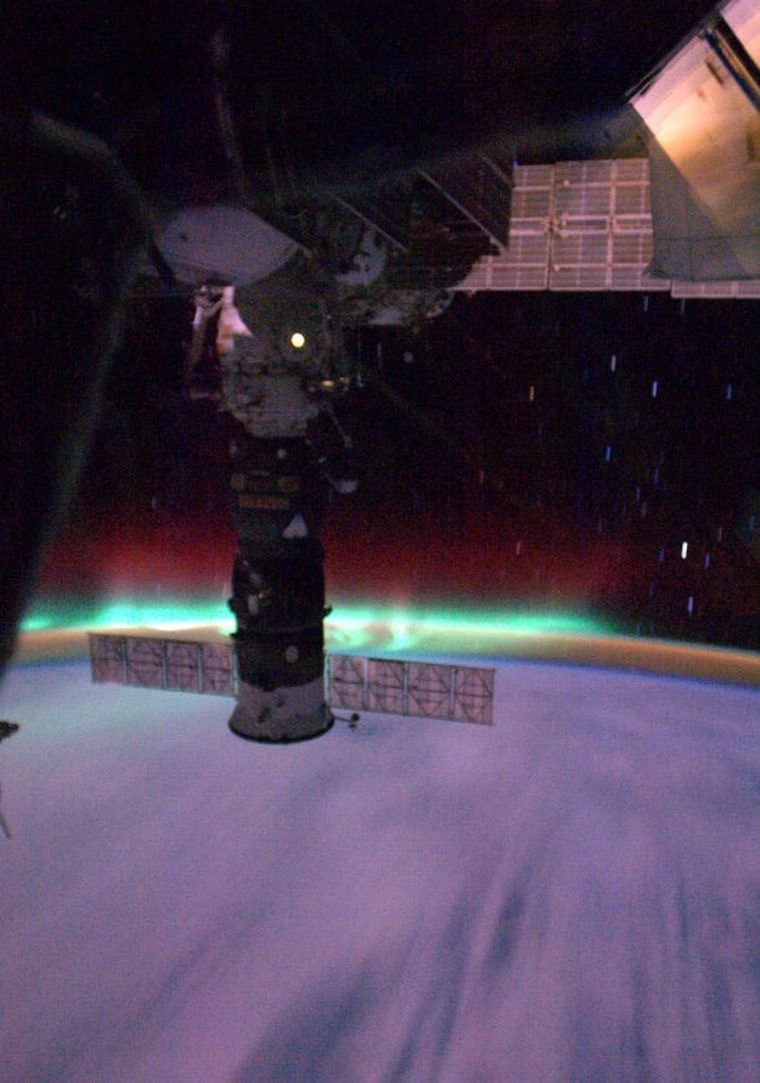An astronaut has captured the rare view of the International Space Station zooming through a dazzling display of Earth's aurora as the strongest geomagnetic storm of the year hit the planet.
In the stunning space aurora photo, the International Space Station is seen flying 220 miles (354 km) over an Earth lit up by eerie green auroras peppered by red hues. A Russian Soyuz spacecraft is backlit by the cosmic light show in the image.
Japanese astronaut Soichi Noguchi took the stunning photo and posted it Monday on Twitter, where he has been chronicling his six-month mission to the space station under the name Astro_Soichi.
"Fly through Aurora at 28,000 km/h," Noguchi wrote, cheering his 1,000th tweet. The International Space Station orbits the Earth at about 17,500 mph (28,163 kph).
According to Spaceweather.com, Noguchi's aurora snapshot coincided with a strong gust of solar wind that hit the Earth's magnetosphere on Monday, creating the most powerful geomagnetic storm of the year.
The storm is subsiding, but has been creating spectacular auroras for skywatchers in high-latitude regions, Spaceweather.com reported.
Noguchi and his crewmates recently set a new space photography record for the most photos taken in a single mission. He and his five crewmates at the International Space Station are about to get extremely busy.
NASA's space shuttle Discovery will arrive at the station early Wednesday with a crew of seven astronauts, boosting the number of people aboard to 13 people.
The shuttle will deliver tons of supplies, spare parts and new science gear to the space station. It is one of NASA's final four shuttle missions before the fleet is retired in the fall.
